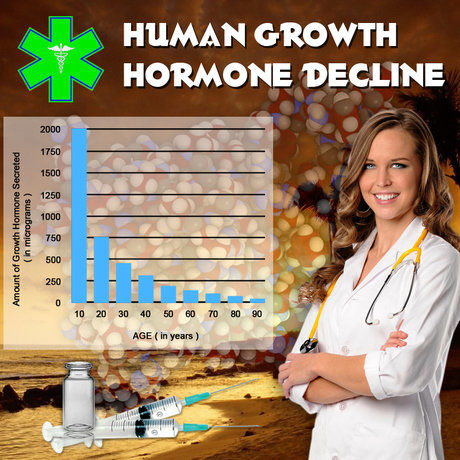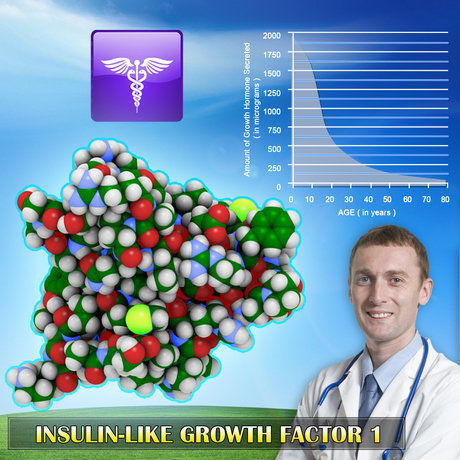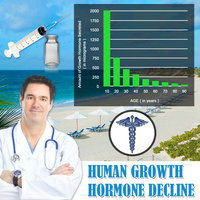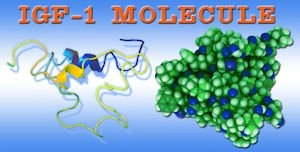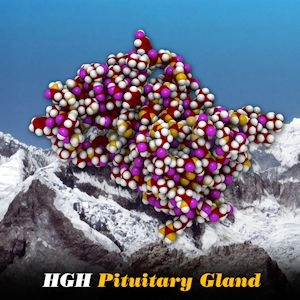Introduction to Penile Edema
Penile edema, characterized by the swelling of the penis due to fluid accumulation, is a condition that can cause significant discomfort and concern for American males. Understanding the underlying causes, accurate diagnosis, and effective treatment strategies is crucial for managing this condition and restoring quality of life.
Causes of Penile Edema
Penile edema can arise from various factors, ranging from benign to more serious underlying conditions. One common cause is an allergic reaction, often triggered by exposure to certain medications, latex condoms, or personal care products. In such cases, the body's immune response leads to inflammation and fluid retention in the penile tissue.
Infections, such as balanitis or cellulitis, can also contribute to penile swelling. These infections may be caused by bacteria, fungi, or sexually transmitted organisms, necessitating prompt medical attention to prevent complications.
Trauma or injury to the penis, such as from vigorous sexual activity or accidents, can result in localized swelling and edema. Additionally, systemic conditions like heart failure, kidney disease, or liver cirrhosis can lead to generalized fluid retention, including in the penile area.
Diagnosis of Penile Edema
Accurate diagnosis of penile edema is essential for determining the appropriate course of treatment. A thorough medical history and physical examination by a healthcare professional are the first steps in the diagnostic process. The physician will inquire about the onset, duration, and severity of symptoms, as well as any potential triggers or associated factors.
In some cases, additional tests may be necessary to identify the underlying cause of penile edema. These may include blood tests to assess kidney and liver function, urine analysis to detect infections, or imaging studies such as ultrasound to evaluate the penile tissue and surrounding structures.
Treatment Strategies for Penile Edema
The treatment approach for penile edema depends on the underlying cause and severity of the condition. In cases of allergic reactions, antihistamines and topical corticosteroids may be prescribed to reduce inflammation and alleviate symptoms. It is crucial to identify and avoid the allergen responsible for the reaction to prevent future episodes.
For infections causing penile edema, appropriate antimicrobial therapy, such as antibiotics or antifungal medications, is essential. In severe cases, hospitalization and intravenous administration of medications may be necessary.
When trauma or injury is the cause of penile swelling, conservative measures such as rest, ice application, and elevation of the affected area can help reduce edema. In more severe cases, surgical intervention may be required to repair damaged tissue and restore normal function.
For penile edema resulting from systemic conditions, treatment focuses on managing the underlying disease. This may involve medications to improve heart, kidney, or liver function, as well as lifestyle modifications such as dietary changes and fluid restriction.
Prevention and Self-Care
While not all cases of penile edema can be prevented, certain measures can help reduce the risk and promote overall penile health. Practicing good hygiene, using hypoallergenic personal care products, and engaging in safe sexual practices can minimize the likelihood of allergic reactions and infections.
Maintaining a healthy lifestyle, including regular exercise, a balanced diet, and adequate hydration, can support overall cardiovascular and renal health, reducing the risk of systemic conditions that may contribute to penile edema.
If penile swelling occurs, it is important to seek prompt medical attention. Self-care measures such as applying cold compresses, elevating the penis, and avoiding irritants can provide temporary relief, but professional evaluation is necessary to determine the underlying cause and appropriate treatment.
Conclusion
Penile edema, though often distressing, is a manageable condition when approached with a comprehensive understanding of its causes, diagnosis, and treatment strategies. By staying informed and proactive about penile health, American males can navigate this condition with confidence and seek appropriate medical care when needed. Through a collaborative effort between patients and healthcare providers, the mysteries of penile edema can be unraveled, leading to improved outcomes and enhanced quality of life.
Contact Us For A Fast And Professional Response

- Navigating the Psychological Terrain of Penile Health: Insights for American Men [Last Updated On: February 27th, 2025] [Originally Added On: February 27th, 2025]
- Managing Penile Skin Conditions: Symptoms, Treatments, and Preventive Care for Men [Last Updated On: March 9th, 2025] [Originally Added On: March 9th, 2025]
- Penile Nerve Blocks: Pain Management and Surgical Benefits for American Males [Last Updated On: March 16th, 2025] [Originally Added On: March 16th, 2025]
- Penile Enlargement: Evaluating Safety, Efficacy, and Psychological Impacts [Last Updated On: March 17th, 2025] [Originally Added On: March 17th, 2025]
- Penile Trauma: Emergency Care, Long-Term Management, and Scientific Insights for American Males [Last Updated On: March 17th, 2025] [Originally Added On: March 17th, 2025]
- Optimal Penile Hygiene Practices for American Males: A Comprehensive Guide [Last Updated On: March 17th, 2025] [Originally Added On: March 17th, 2025]
- Penile Ulcers: Causes, Diagnosis, and Treatment for American Males [Last Updated On: March 19th, 2025] [Originally Added On: March 19th, 2025]
- Lifestyle Impact on Penile Health: Diet, Exercise, and Habits for American Males [Last Updated On: March 20th, 2025] [Originally Added On: March 20th, 2025]
- Advancements in Penile Prostheses: Technology, Outcomes, and Future Directions [Last Updated On: March 21st, 2025] [Originally Added On: March 21st, 2025]
- Testosterone's Crucial Role in Penile Health and Function for American Males [Last Updated On: March 21st, 2025] [Originally Added On: March 21st, 2025]
- Obesity's Impact on Penile Function: A Comprehensive Review for American Males [Last Updated On: March 21st, 2025] [Originally Added On: March 21st, 2025]
- Penile MRI: Advanced Imaging for Diagnosing Complex Penile Conditions [Last Updated On: March 21st, 2025] [Originally Added On: March 21st, 2025]
- Genetics of Penile Development: Insights into Genes, Anomalies, and Health Implications [Last Updated On: March 22nd, 2025] [Originally Added On: March 22nd, 2025]
- Medications' Impact on Penile Function: Insights for American Males [Last Updated On: March 22nd, 2025] [Originally Added On: March 22nd, 2025]
- Penile Lymphatic System: Functions, Disorders, and Health Management for American Males [Last Updated On: March 22nd, 2025] [Originally Added On: March 22nd, 2025]
- Penile Reconstruction: Techniques, Innovations, and Impact on American Males' Quality of Life [Last Updated On: March 23rd, 2025] [Originally Added On: March 23rd, 2025]
- Understanding and Managing Penile Sensory Neuropathy in American Males [Last Updated On: March 23rd, 2025] [Originally Added On: March 23rd, 2025]
- Hormonal Imbalances: Effects on Penile Health and Management Strategies [Last Updated On: March 23rd, 2025] [Originally Added On: March 23rd, 2025]
- Managing Penile Allergies: Symptoms, Diagnosis, and Effective Strategies for American Males [Last Updated On: March 23rd, 2025] [Originally Added On: March 23rd, 2025]
- Penile Vascular Health: Understanding, Maintaining, and Enhancing Blood Flow for American Males [Last Updated On: March 23rd, 2025] [Originally Added On: March 23rd, 2025]
- Chronic Diseases' Impact on Penile Health in American Males: A Comprehensive Overview [Last Updated On: March 24th, 2025] [Originally Added On: March 24th, 2025]
- Penile Bleeding: Causes, Symptoms, and Emergency Care for American Males [Last Updated On: March 24th, 2025] [Originally Added On: March 24th, 2025]
- Radiation Therapy's Impact on Penile Health: Effects and Management Strategies for American Males [Last Updated On: March 24th, 2025] [Originally Added On: March 24th, 2025]
- Understanding and Managing Penile Pain: Causes, Diagnosis, and Relief Strategies [Last Updated On: March 24th, 2025] [Originally Added On: March 24th, 2025]
- Understanding and Managing Penile Itching: Causes, Symptoms, and Treatment Options [Last Updated On: March 24th, 2025] [Originally Added On: March 24th, 2025]
- Penile Nerve Function: Anatomy, Sexual Response, and Impact of Damage [Last Updated On: March 24th, 2025] [Originally Added On: March 24th, 2025]
- Neurological Disorders and Penile Function: Insights for American Males [Last Updated On: March 25th, 2025] [Originally Added On: March 25th, 2025]
- Penile Veins: Anatomy, Function, and Disorders in American Men [Last Updated On: March 25th, 2025] [Originally Added On: March 25th, 2025]
- Understanding Penile Discharge: Causes, Symptoms, and Treatment Options for American Males [Last Updated On: March 25th, 2025] [Originally Added On: March 25th, 2025]
- Penile Sensitivity: Key to Male Sexual Health and Function [Last Updated On: March 25th, 2025] [Originally Added On: March 25th, 2025]
- Penile Biopsy: Diagnosis, Procedure, and Impact on Urological Health in American Males [Last Updated On: March 25th, 2025] [Originally Added On: March 25th, 2025]
- Understanding and Managing Penile Swelling: Causes, Diagnosis, and Treatment for American Males [Last Updated On: March 25th, 2025] [Originally Added On: March 25th, 2025]
- Diet's Crucial Role in Enhancing Male Penile Health: Nutrients and Recommendations [Last Updated On: March 25th, 2025] [Originally Added On: March 25th, 2025]
- Spinal Cord Injuries: Impact on Penile Function and Treatment Options for American Males [Last Updated On: March 26th, 2025] [Originally Added On: March 26th, 2025]
- Penile Arteries and Erection Health: Anatomy, Risks, and Management Strategies [Last Updated On: March 26th, 2025] [Originally Added On: March 26th, 2025]
- Understanding Penile Discoloration: Causes, Symptoms, and Treatment Options for American Males [Last Updated On: March 26th, 2025] [Originally Added On: March 26th, 2025]
- Penile Ultrasound: Revolutionizing Sexual Dysfunction Diagnosis in American Males [Last Updated On: March 26th, 2025] [Originally Added On: March 26th, 2025]
- Understanding Penile Lesions: Types, Causes, and Treatments for American Males [Last Updated On: March 26th, 2025] [Originally Added On: March 26th, 2025]
- Chemotherapy's Impact on Penile Health: Effects, Management, and Support for American Males [Last Updated On: March 26th, 2025] [Originally Added On: March 26th, 2025]
- Understanding Penile Rashes: Types, Causes, and Dermatological Treatments [Last Updated On: March 26th, 2025] [Originally Added On: March 26th, 2025]
- Understanding Penile Numbness: Causes, Diagnosis, and Treatment Options for Men [Last Updated On: March 26th, 2025] [Originally Added On: March 26th, 2025]
- Understanding Penile Warts: Causes, Symptoms, and Treatment Options for American Males [Last Updated On: March 27th, 2025] [Originally Added On: March 27th, 2025]
- Penile Blood Tests: Diagnosing Vascular, Hormonal, and Systemic Health in Men [Last Updated On: March 27th, 2025] [Originally Added On: March 27th, 2025]
- Penile Girth's Impact on Sexual Satisfaction: Insights from American Male Studies [Last Updated On: March 27th, 2025] [Originally Added On: March 27th, 2025]
- Penile Piercings: Health Risks, Benefits, and Considerations for American Men [Last Updated On: March 27th, 2025] [Originally Added On: March 27th, 2025]
- Penile Prosthetics: Advanced Solution for Severe Erectile Dysfunction in American Males [Last Updated On: March 27th, 2025] [Originally Added On: March 27th, 2025]
- Penile Skin Grafts: Indications, Procedures, and Outcomes for American Males [Last Updated On: March 27th, 2025] [Originally Added On: March 27th, 2025]
- Understanding and Managing Penile Sores: Causes, Symptoms, and Treatments [Last Updated On: March 27th, 2025] [Originally Added On: March 27th, 2025]
- Penile Injuries: Types, Sexual Function Impact, and Importance of Timely Medical Intervention [Last Updated On: March 28th, 2025] [Originally Added On: March 28th, 2025]
- Penile Health and Fertility: Understanding the Vital Connection for American Males [Last Updated On: March 28th, 2025] [Originally Added On: March 28th, 2025]
- Penile Health: Impact on American Males' Physical, Psychological, and Relational Well-being [Last Updated On: March 29th, 2025] [Originally Added On: March 29th, 2025]
- Understanding Penile Lumps: Types, Causes, and Management for American Males [Last Updated On: March 29th, 2025] [Originally Added On: March 29th, 2025]
- Understanding Penile Dermatitis: Symptoms, Causes, and Effective Management Strategies [Last Updated On: March 30th, 2025] [Originally Added On: March 30th, 2025]
- Penile Health and Its Impact on Partner Sexual Satisfaction in American Males [Last Updated On: April 3rd, 2025] [Originally Added On: April 3rd, 2025]
- Understanding and Managing Penile Redness in American Males: Causes, Symptoms, and Treatments [Last Updated On: April 4th, 2025] [Originally Added On: April 4th, 2025]
- Penile Health's Impact on Mental Well-being in American Men: A Medical Perspective [Last Updated On: April 5th, 2025] [Originally Added On: April 5th, 2025]
- Penile Health's Impact on Urinary Function: Insights for American Males [Last Updated On: April 5th, 2025] [Originally Added On: April 5th, 2025]
- Penile Burning in American Males: Causes, Diagnosis, and Management Strategies [Last Updated On: April 6th, 2025] [Originally Added On: April 6th, 2025]
- Managing Penile Dryness: Causes, Symptoms, and Dermatological Treatments for American Males [Last Updated On: April 7th, 2025] [Originally Added On: April 7th, 2025]
- Understanding Penile Blisters: Causes, Symptoms, and Effective Management Strategies [Last Updated On: April 8th, 2025] [Originally Added On: April 8th, 2025]
- Penile Health and STI Prevention: A Comprehensive Guide for American Males [Last Updated On: April 9th, 2025] [Originally Added On: April 9th, 2025]
- Penile Sensitivity Disorders: Causes, Diagnosis, and Treatment Options for American Males [Last Updated On: April 10th, 2025] [Originally Added On: April 10th, 2025]
- Understanding the Interconnected Health of Penis and Prostate in American Males [Last Updated On: April 11th, 2025] [Originally Added On: April 11th, 2025]
- Penile Health Linked to Cardiovascular Risks: Study Insights for American Men [Last Updated On: April 12th, 2025] [Originally Added On: April 12th, 2025]
- Penile Health and Hormonal Balance: A Comprehensive Guide for American Males [Last Updated On: April 13th, 2025] [Originally Added On: April 13th, 2025]
- Penile Health's Crucial Role in Male Reproductive Wellness: Insights and Strategies [Last Updated On: April 13th, 2025] [Originally Added On: April 13th, 2025]
- Understanding and Managing Penile Foreskin Health Issues in American Males [Last Updated On: April 13th, 2025] [Originally Added On: April 13th, 2025]
- Managing Penile Odor: Causes, Symptoms, and Effective Treatments for Men [Last Updated On: April 14th, 2025] [Originally Added On: April 14th, 2025]
- Penile Health: Understanding Anatomy, Issues, and Sexual Function in American Males [Last Updated On: April 15th, 2025] [Originally Added On: April 15th, 2025]
- Penile Health's Impact on Immune Function in American Males: A Comprehensive Overview [Last Updated On: April 15th, 2025] [Originally Added On: April 15th, 2025]
- Aging and Penile Sensitivity: A Comprehensive Guide for American Males [Last Updated On: April 16th, 2025] [Originally Added On: April 16th, 2025]
- Penile and Musculoskeletal Health: Causes, Symptoms, and Holistic Treatment Approaches [Last Updated On: April 16th, 2025] [Originally Added On: April 16th, 2025]
- Penile Health and Respiratory Wellness: Interconnected Systems for American Male Health [Last Updated On: April 16th, 2025] [Originally Added On: April 16th, 2025]
- Endocrine Disorders and Penile Health: Causes, Symptoms, and Management for American Males [Last Updated On: April 16th, 2025] [Originally Added On: April 16th, 2025]
- Penile and Kidney Health: Understanding the Vital Connection for American Males [Last Updated On: April 18th, 2025] [Originally Added On: April 18th, 2025]
- Managing Penile Irritation: Causes, Symptoms, and Dermatological Treatments for American Men [Last Updated On: April 19th, 2025] [Originally Added On: April 19th, 2025]
- Neurological Health Impacts Penile Sensitivity in American Males: Recent Research and Clinical Insights [Last Updated On: April 19th, 2025] [Originally Added On: April 19th, 2025]
- Exploring the Link Between Penile Health and Gastrointestinal Wellness in American Males [Last Updated On: April 19th, 2025] [Originally Added On: April 19th, 2025]

